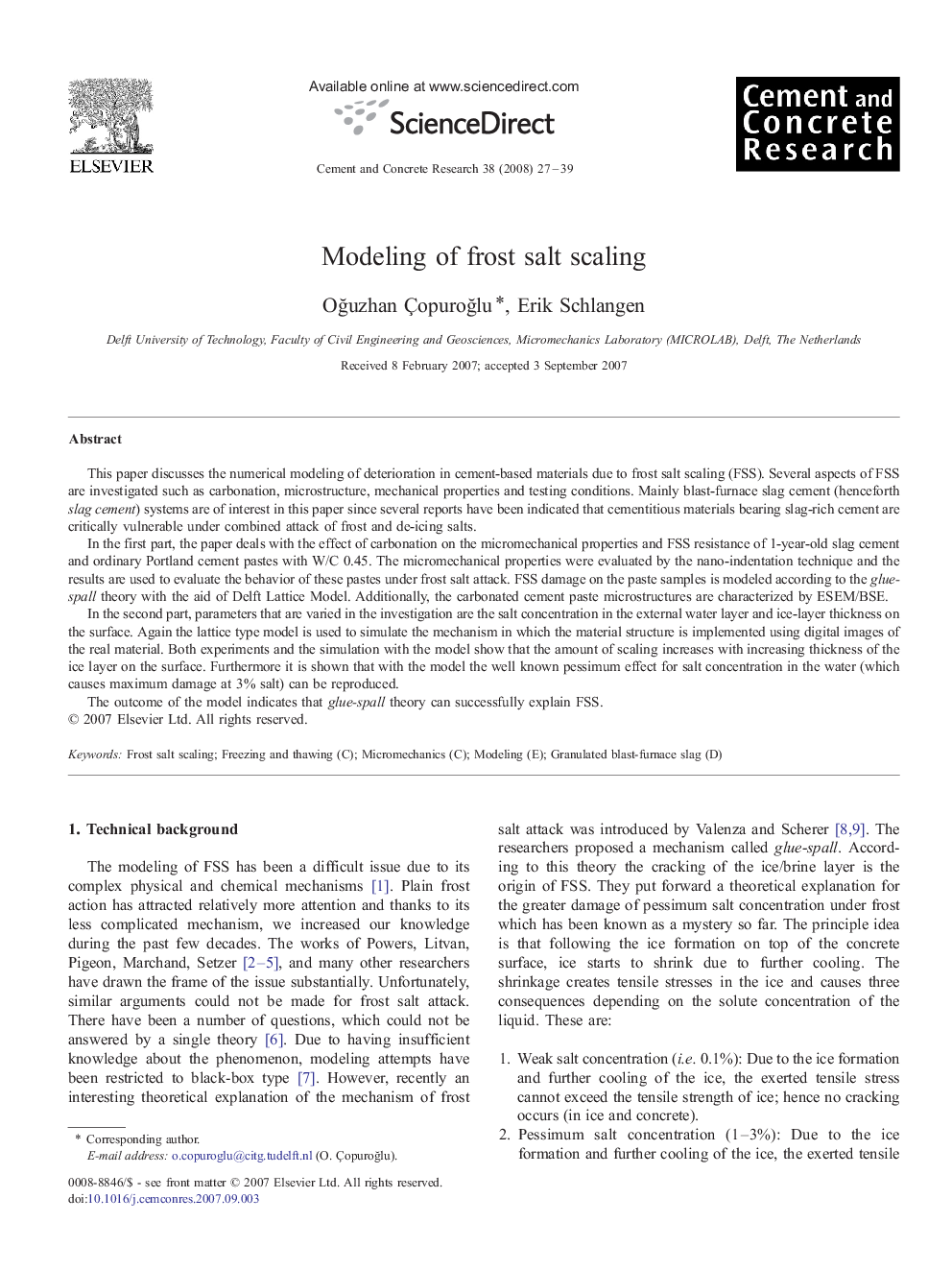| Article ID | Journal | Published Year | Pages | File Type |
|---|---|---|---|---|
| 1457676 | Cement and Concrete Research | 2008 | 13 Pages |
This paper discusses the numerical modeling of deterioration in cement-based materials due to frost salt scaling (FSS). Several aspects of FSS are investigated such as carbonation, microstructure, mechanical properties and testing conditions. Mainly blast-furnace slag cement (henceforth slag cement) systems are of interest in this paper since several reports have been indicated that cementitious materials bearing slag-rich cement are critically vulnerable under combined attack of frost and de-icing salts.In the first part, the paper deals with the effect of carbonation on the micromechanical properties and FSS resistance of 1-year-old slag cement and ordinary Portland cement pastes with W/C 0.45. The micromechanical properties were evaluated by the nano-indentation technique and the results are used to evaluate the behavior of these pastes under frost salt attack. FSS damage on the paste samples is modeled according to the glue-spall theory with the aid of Delft Lattice Model. Additionally, the carbonated cement paste microstructures are characterized by ESEM/BSE.In the second part, parameters that are varied in the investigation are the salt concentration in the external water layer and ice-layer thickness on the surface. Again the lattice type model is used to simulate the mechanism in which the material structure is implemented using digital images of the real material. Both experiments and the simulation with the model show that the amount of scaling increases with increasing thickness of the ice layer on the surface. Furthermore it is shown that with the model the well known pessimum effect for salt concentration in the water (which causes maximum damage at 3% salt) can be reproduced.The outcome of the model indicates that glue-spall theory can successfully explain FSS.
